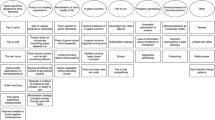Abstract
Traditionally, most software patches have primarily fixed bugs or improved performance in previously released software. However, modern computer games use patches not only to fix software but to change gameplay, as well. Despite the importance of changes in gameplay to both the players and the game designers, there is little or no published results nor 3rd party Websites that analyze game data along with patch data. We analyzed the effect of patches on gameplay for what may be the most popular computer game in the world, Riot Games League of Legends (LoL). Our methods: (1) harvested all available patch data—over 160 patch files with over 7700 patch changes—and created a novel taxonomy to classifying the patch changes; (2) gathered game statistics from over 11,000 players and over 465,000 games; (3) analyzed game data and patch data separately and in combination to gather insights into the impact of patching; and (4) developed a publicly accessible Web site that allows for interactive exploration of game data and the corresponding patches. Analysis of the data shows that Riot Games applies patch changes to LoL gameplay twice each day on average, about 10× more often than Riot Games patches LoL bugs. Patches tend to keep player-chosen champions close to a win rate of 50%. While most gameplay patch changes can be categorized and quantified, the effects of patches are not straightforward and require interpretation of patch text in order to fully understand their impact.
















Similar content being viewed by others
Notes
As of February 2016, the time of this study.
Prior to Season 4, game data is incomplete and win rates for champions cannot be computed.
Excluding Master and Challenger, since the vast majority of players are in Bronze through Platinum.
February 2016.
Patch files 1–6 were for the closed Alpha and only have a year (2009).
December 17, 2009.
Corresponding patch change text not shown here due to their length, but can be found at the Web site.
References
Arora, A., Krishnan, R., Telang, R., & Yang, Y. (2010). An empirical analysis of software vendors’ patch release behavior: Impact of vulnerability disclosure. Information Systems Resarch, 21(1), 115–132.
Champion.gg— LoL champion stats, builds, runes, and masteries. http://champion.gg/. Retrieved October 15, 2016.
Claypool, M., Decelle, J., Hall, G., & O’Donnell, L. (2015). Surrender at 20? Matchmaking in League of Legends. In Proceedings of the IEEE Games, Entertainment, Media Conference (GEM), Toronto, Canada.
E-Sports Earnings. Largest overall prize pools in eSports. http://www.esportsearnings.com/tournaments. Retrieved June 22, 2016.
E-Sports Earnings. League of Legends 2014 World Championships. http://www.esportsearnings.com/tournaments/7376-lol-2014-world-championship.
E-Sports Earnings. League of Legends 2015 World Championships. http://www.esportsearnings.com/tournaments/15149-lol-2015-world-championship. Retrieved June 22, 2016.
Gkantsidis, C., Karagiannis, T., & VojnoviC, M. (2006). Planet scale software updates. ACM SIGCOMM Computer Communications Review, 36(4), 423–434.
Hullett, K., Nagappan, N., Schuh, E., & Hopson, J. (2011). Data analytics for game development: NIER track. In Proceedings of the 33rd IEEE International Conference on Software Engineering (ICSE), Honolulu, Hawaii.
Jeppesen, L. B. (2004). Profiting from innovative user communities: How firms organize the production of user modifications in the computer games industry. Department of Industrial Economics and Strategy, Copenhagen Business School, Cophenhagen, Denmark: Technical report.
Kow, Y. M., & Nardi, B. (2010). Culture and creativity: World of warcraft modding in China and the U.S. In W. S. Bainbridge (Ed.), Online worlds: Convergence of the real and the virtual. Human—computer interaction (pp. 21–41). Springer.
Lin, Z., Jiang, X., Xu, D., Mao, B., & Xie, L. (2007). AutoPaG: Towards automated software patch generation with source code root cause identification and repair. In Proceedings of the 2nd ACM Symposium on Information, Computer and Communications Security (ASIACCS) (pp. 329–340), Singapore.
Lizardi, R. (2012). DLC: Perpetual commodification of the video game. Democratic Communiqué, 25(1), 1–45.
Lol—League of legends summoner stats and champion build guides. http://www.lolking.net/. Retrieved October 15, 2016.
Nieborg, D. B. (2005). Am I mod or not?—An analysis of first person shooter modification culture. In Proceedings of the Creative Gamers Seminar—Exploring Participatory Culture in Gaming, Helsinki, Finland.
Patch. http://leagueoflegends.wikia.com/wiki/Patch. Retrieved November 18, 2016.
Picture of Horse. (2016). Choosing the right champion. https://support.riotgames.com/hc/en-us/articles/201752864-Choosing-the-Right-Champion.
Raptr—The Offical Blog (2015). Most played games: November 2015. http://goo.gl/bVytCX. Retrieved June 22, 2016.
Riot Games. Our games. http://www.riotgames.com/our-games. Retrieved June 22, 2016.
Schryen, G. (2009). A comprehensive and comparative analysis of the patching behavior of open source and closed source software vendors. In Proceedings of the IEEE Conference on IT Security Incident Management and IT Forensics (IMF), Stutgart, Germany.
Sotamaa, O. (2004). Playing it my way? Mapping the modder agency. In Proceedings of the Internet Research Conference (Vol. 5, pp. 19–22).
Webb, S. D., & Soh, S. (2007). Cheating in networked computer games: A review. In Proceedings of the 2nd International Conference on Digital Interactive Media in Entertainment and Arts (DIMEA) (pp. 105–112). Australia: Perth.
Author information
Authors and Affiliations
Corresponding author
About this article
Cite this article
Claypool, M., Kica, A., La Manna, A. et al. On the Impact of Software Patching on Gameplay for the League of Legends Computer Game. Comput Game J 6, 33–61 (2017). https://doi.org/10.1007/s40869-017-0032-9
Received:
Accepted:
Published:
Issue Date:
DOI: https://doi.org/10.1007/s40869-017-0032-9




